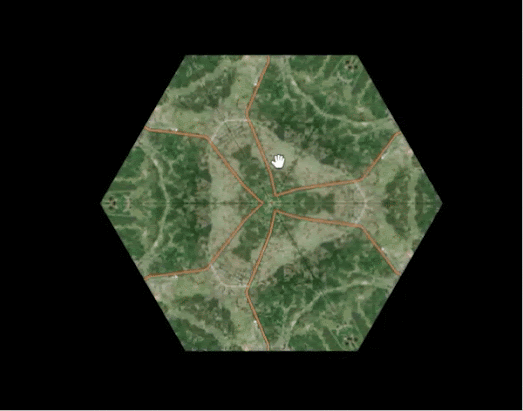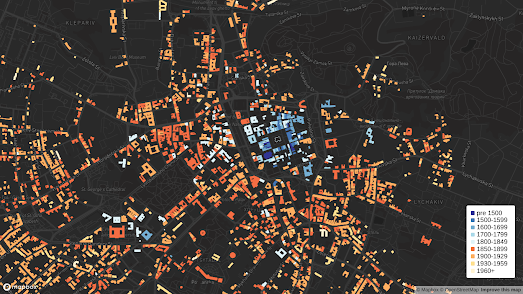A World of Good Wishes at Christmastime is a pictorial map which was published by the General Drafting Company in 1950. The map shows Santa Claus participating in a range of 'local' activities around the world.
As you might imagine the map relies on a number of perceived Western stereotypes. For example in Scotland Santa is depicted playing the bagpipes, in Australia he is seen boxing with a kangaroo, in India he is charming a snake and in Spain he can be seen fighting a bull.
The General Drafting Company was one of the three big road map publishers in 20th Century America. They were the exclusive publisher of maps for a number of oil companies. The map 'A World of Good Wishes at Christmastime' however appears to have been published under the General Drafting Company's own name and I imagine was produced to promote the company and perhaps to be sent to customers and prospective customers as a kind of map themed Christmas Card.
My interactive version of A World of Good Wishes at Christmastime was created using the IIIF Manifest of the copy of the map owned by the
American Geographical Society Library Digital Map Collection at the University of Wisconsin. You can also view an interactive version of the map on the library's website.
Another fun Christmas themed map is the
Smithsonian Folkways Holiday Music Map. This musical map is bursting with traditional holiday music, featuring songs from the the museum's Folkways Recordings collection.
The map includes 56 songs in total from 24 different nations. These are songs which celebrate the winter holidays, whether that be Christmas, Chanukah, or Kwanzaa. Using the map you can listen to an Icelandic version of 'Silent Night', 'O Tannenbaum' from Germany, 'Psalm 150' sung by the Jewish Abayudaya congregation in Uganda or traditional Christmas songs from many other country's across the world.
Every Christmas Eve you can track Santa's journey around the globe on Google's annual Santa Tracking map. However you don't have to wait until Christmas Eve to visit the Google Santa Tracker. Every day, between now and Christmas Eve, the Google Santa Tracker will feature a different Christmas related game.
The Google Santa Tracker also includes a Google Map looking at
Christmas Traditions across the world. It is always fascinating to explore how different cultures celebrate Christmas around the globe. For example did you know that in Iceland the Christmas Cat prowls the streets at Christmas gobbling up anyone who is not dressed-up in clothes warm enough to ward off the winter cold?












































